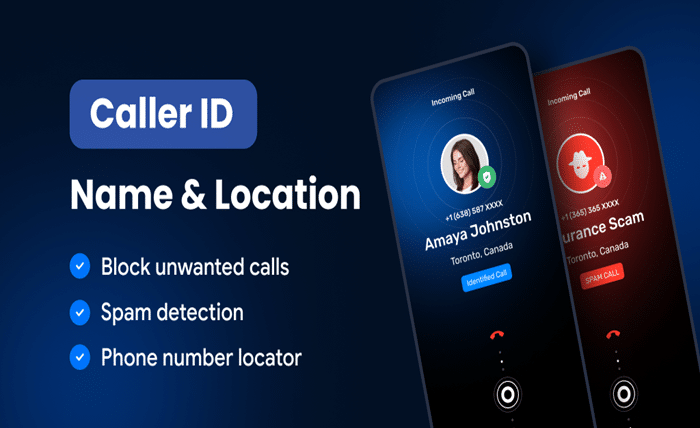Aking in Caller Name: The Ultimate Guide to Caller Identification and Customization

In today’s digital world, caller identification has become an essential feature for managing incoming calls efficiently. Whether you want to identify unknown numbers, block spam calls, or personalize your call settings, “aking in caller name” is a crucial function that enhances communication. This guide explores the benefits, features, and implementation of “aking in caller name,” ensuring you make the most of this technology.
What is Aking in Caller Name?
“Aking in caller name” refers to the process of identifying and displaying the caller’s name when receiving a call. This feature is particularly useful for distinguishing between known and unknown callers, blocking spam calls, and customizing call settings for better communication management. By using advanced caller identification techniques, “aking in caller name” helps users stay informed about who is calling before answering.
The feature is commonly found in caller ID apps, mobile networks, and VoIP services. “Aking in caller name” ensures that users receive essential details about incoming calls, reducing the chances of missing important calls while avoiding spam or robocalls. With advancements in mobile technology, this feature is becoming more reliable and widely accessible.
The Importance of Aking in Caller Name for Call Identification
“Aking in caller name” plays a crucial role in call identification, allowing users to recognize callers instantly. In a world where spam and fraudulent calls are increasing, having a caller identification system is essential for security and convenience. Here’s why “aking in caller name” is important:
-
Prevents Scam and Fraud Calls: Many scammers disguise their numbers to trick users. “Aking in caller name” helps detect and filter such calls.
-
Improves Call Management: Knowing the caller’s name in advance enables better decision-making—whether to answer, ignore, or block a call.
-
Enhances Business Communication: Businesses use “aking in caller name” to verify client or customer calls, ensuring authenticity.
-
Reduces Missed Calls: When users see familiar names on incoming calls, they are more likely to answer, reducing the chances of missing important calls.
By integrating “aking in caller name” into smartphones and communication apps, users can significantly improve their call management and security.
How Aking in Caller Name Works in Mobile Devices
Mobile devices use different methods for “aking in caller name,” depending on the network provider and app settings. This feature typically functions through:
-
Network-Based Caller ID: Telecom providers use database records to identify callers and display their names.
-
Caller ID Apps: Third-party applications such as Truecaller, Hiya, and Whoscall use crowd-sourced databases to identify callers in real time.
-
Smartphone Settings: Many modern smartphones come with built-in caller ID features that allow “aking in caller name” without additional apps.
-
Cloud-Based Contacts Syncing: Some apps sync with users’ contact lists to display caller names based on previously saved information.
With the increasing need for accurate caller identification, advancements in AI and machine learning are making “aking in caller name” more efficient and reliable.
Best Apps for Aking in Caller Name and Call Management
Many mobile apps offer caller identification services to enhance “aking in caller name” functionality. These apps help users recognize unknown callers and avoid spam calls. Here are some of the best apps for “aking in caller name”:
-
Truecaller: One of the most popular caller ID apps, Truecaller provides real-time caller identification, spam blocking, and call recording features.
-
Hiya: This app focuses on security by identifying potential scam calls and allowing users to customize call preferences.
-
Whoscall: With a vast global database, Whoscall offers accurate caller name identification and call filtering.
-
CallApp: A feature-rich app that integrates “aking in caller name” with call recording, spam blocking, and contact management.
-
Eyecon: This app links social media accounts to caller names, adding a visual aspect to caller identification.
By using these apps, users can enhance “aking in caller name” functionality and ensure a safer, more personalized calling experience.
Benefits of Aking in Caller Name for Business and Personal Use
“Aking in caller name” offers numerous benefits for both personal and business communication. From improving security to enhancing customer interactions, this feature is an essential tool for effective call management.
Benefits for Personal Use
- Prevents Unwanted Calls: Identifying spam and fraud calls helps users avoid unnecessary interruptions.
- Personalized Call Experience: Seeing a contact’s name rather than an unknown number makes calls more convenient and friendly.
- Improved Privacy: Users can screen calls before answering, ensuring that they only engage with known contacts.
- Enhanced Contact Organization: Caller ID apps categorize and store caller information for future reference.
Benefits for Business Use
- Strengthens Customer Relations: Businesses use “aking in caller name” to ensure that customer calls are recognized and handled efficiently.
- Reduces Unanswered Calls: Clients are more likely to answer calls when they see a business name instead of an unknown number.
- Prevents Fraudulent Calls: Companies can verify incoming calls and avoid scams targeting businesses.
- Increases Productivity: Employees can focus on essential calls rather than dealing with unknown or spam calls.
Whether for personal or business use, “aking in caller name” significantly improves call security and communication efficiency.
How to Enable Aking in Caller Name on Your Smartphone
Activating “aking in caller name” on your smartphone is a simple process. Most modern smartphones and apps offer built-in caller identification features that can be easily enabled. Here’s how you can activate this feature:
For Android Users
- Open the Phone app.
- Tap on the three-dot Menu and go to Settings.
- Look for Caller ID & Spam Protection and enable it.
- Install a caller ID app (e.g., Truecaller) for advanced “aking in caller name” features.
For iPhone Users
- Go to Settings.
- Tap on Phone and then select Caller ID & Spam.
- Enable Silence Unknown Callers to avoid unwanted calls.
- Install a third-party caller ID app to enhance identification accuracy.
By enabling “aking in caller name” on your smartphone, you can better manage your incoming calls and stay informed about who is calling.
Future of Aking in Caller Name and Caller ID Technology
The future of “aking in caller name” is promising, with continuous advancements in artificial intelligence, machine learning, and data security. As communication technology evolves, we can expect:
- AI-Based Call Screening: AI-driven caller identification will improve accuracy in recognizing and blocking spam or fraudulent calls.
- Enhanced Voice Recognition: Voice recognition technology will allow users to verify caller identities more efficiently.
- Global Caller ID Databases: Larger, more accurate caller ID databases will provide reliable caller name identification worldwide.
- Improved Privacy Controls: Users will have more control over how their caller ID data is shared and used.
With these technological advancements, “aking in caller name” will continue to play a vital role in securing and personalizing communication.
Conclusion
In conclusion, “aking in caller name” is a game-changer in modern communication, allowing users to identify calls, block spam, and personalize their calling experience. With the rise of scam calls and unknown numbers, having a reliable caller identification system is more important than ever. Whether using built-in smartphone features or third-party apps, “aking in caller name” ensures a safer, more organized, and efficient calling experience. As technology continues to evolve, this feature will become even more advanced, making communication smarter and more secure.
FAQs
1. What is the purpose of aking in caller name?
“Aking in caller name” helps users identify incoming calls, prevent spam, and personalize their call management experience.
2. How can I enable aking in caller name on my phone?
You can enable it through your phone settings under Caller ID & Spam Protection or by installing a caller ID app.
3. Are caller ID apps safe to use?
Most reputable caller ID apps are safe, but always check permissions and privacy policies before installation.
4. Does aking in caller name work for all phone numbers?
While it works for most numbers, some private or restricted numbers may not display caller names.
5. Can I customize aking in caller name for my contacts?
Yes, many caller ID apps allow users to customize and edit caller names for saved contacts.




